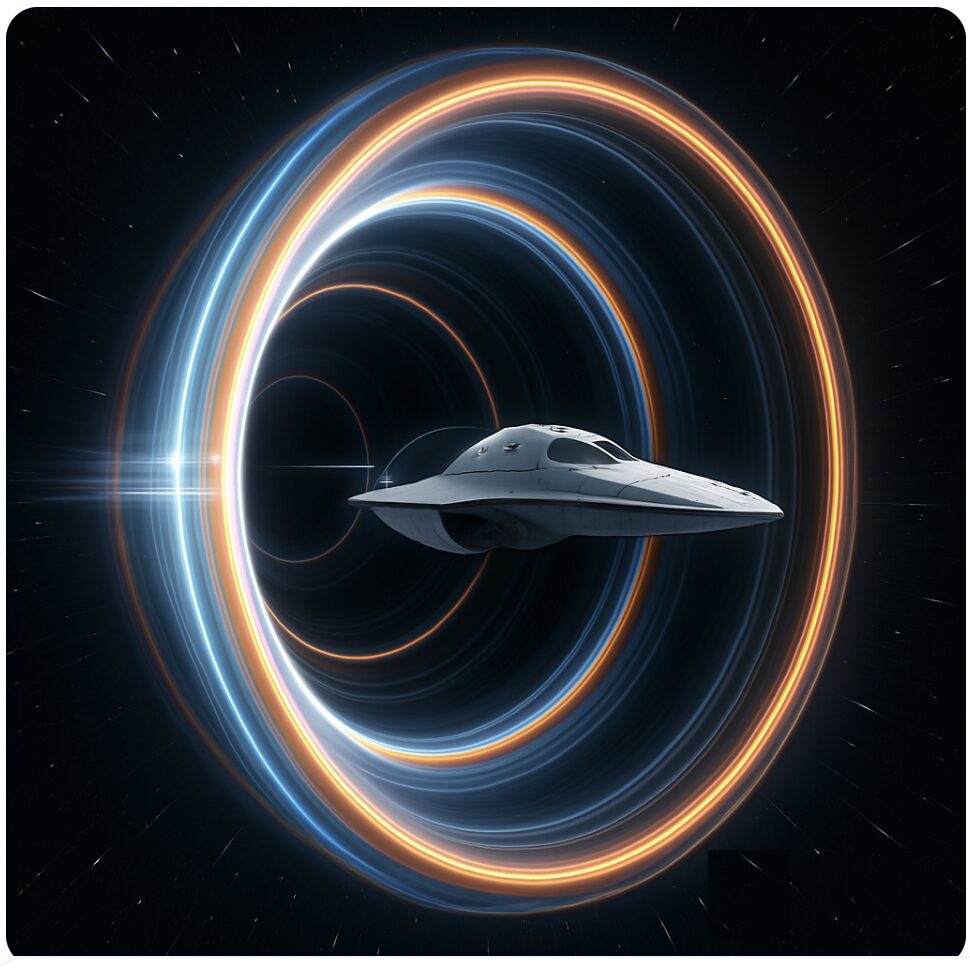
Warp Drive Simulator – Alcubierre-White
Ship Parameters
Stellar Destination
The Warp Drive: Between Science Fiction and Theoretical Physics
The warp drive —or curvature propulsion— is a fascinating idea that has fueled science fiction for decades. But what’s truly amazing is that, despite sounding like something straight out of Star Trek, it actually has a foundation in theoretical physics. The basic concept is to bend space-time around a spacecraft, creating a kind of “bubble” that compresses space in front of it and expands it behind. This means the ship itself wouldn’t move through space — space would move around it, allowing superluminal travel without breaking Einstein’s laws.
Scientific Foundations
In 1994, Mexican physicist Miguel Alcubierre proposed a mathematical model showing how this could work within the framework of general relativity. But there’s a catch — actually, a couple of big ones:
- Negative energy: To warp space-time, you’d need exotic matter with negative energy density, something we’ve only seen on a quantum scale in phenomena like the Casimir effect.
- Massive energy requirements: Early estimates suggested you’d need energy equivalent to the mass of Jupiter. Fortunately, NASA physicist Harold White (2012) introduced an optimized version of the warp bubble, reducing the requirements — but they’re still beyond what we can produce.
Why is it still just a concept?
Exotic matter is out of reach
We have no practical way of producing or storing the negative energy needed. The Casimir effect shows it’s possible in tiny amounts, but scaling that up is far beyond our current tech.
Stability issues
Theoretical models suggest dangerous radiation could build up on the edges of the bubble, and any small misalignment could cause it to collapse. Not exactly a ride you’d want to take untested 😅
Time paradoxes
Faster-than-light (FTL) travel could, in theory, allow time travel to the past — and with that come all the paradoxes physics hasn’t figured out how to solve.
Energy limitations
Even with White’s optimizations, the energy needed would still rival the mass of an entire spacecraft. That’s way beyond anything we can generate or manage today.
Is anyone still working on it?
Absolutely. While we’re nowhere near building one, researchers are still exploring the theory from different angles:
- NASA Eagleworks: A research lab focused on advanced propulsion, including tests for potential tiny space-time distortions.
- Academic institutions: Universities like Sydney and Oxford are refining the math behind warp models, trying to bring energy requirements down.
Conclusion
The warp drive sits at the intersection of bold imagination and serious science. While it remains science fiction for now, studying it helps push the boundaries of general relativity, quantum physics, and our understanding of space travel.
As Carl Sagan once said:
“What is now science fiction may soon be science.”
This interactive simulation is an educational tool meant to explore the theoretical principles behind the warp drive — not a prediction of viable technology. It’s based on the Alcubierre-White models (1994–2012), and reminds us that the universe still holds mysteries that challenge our limits.
